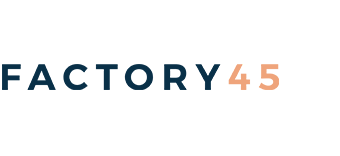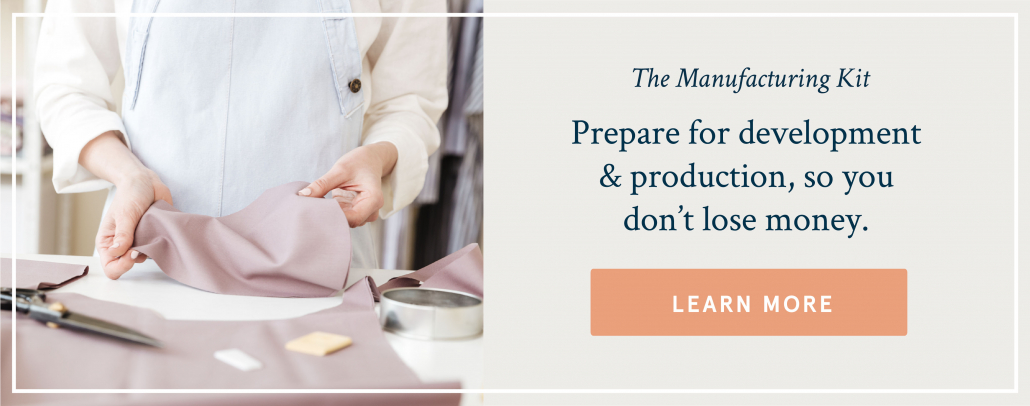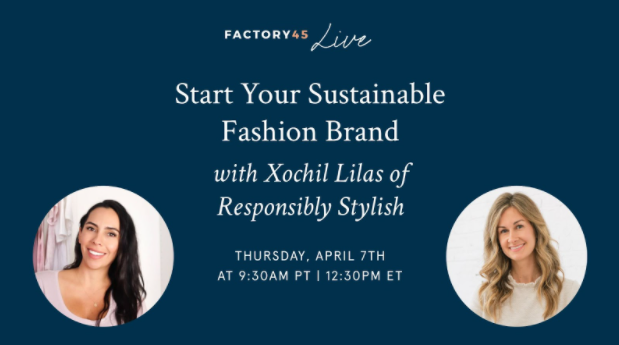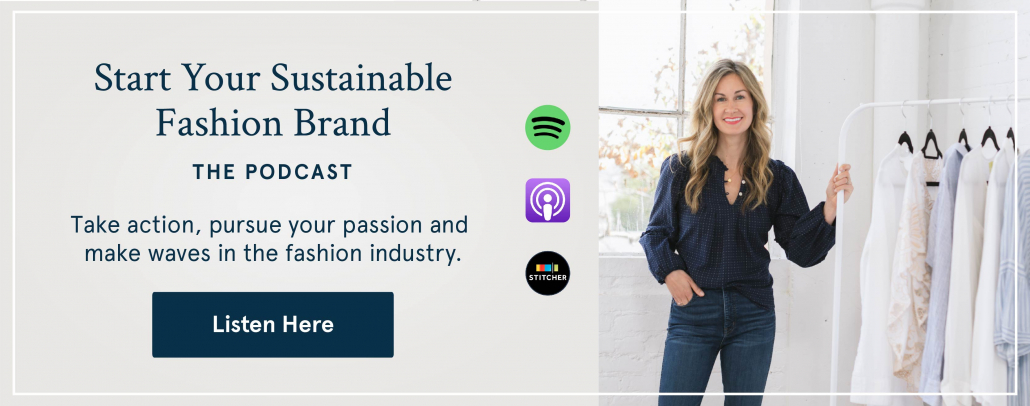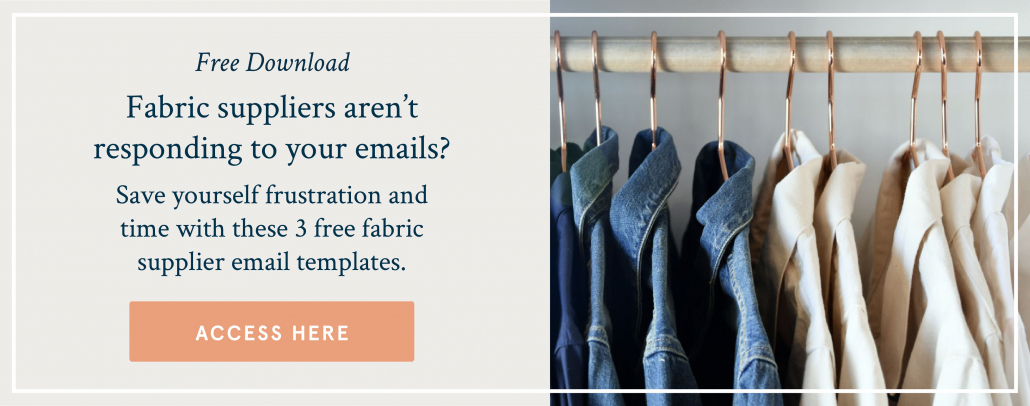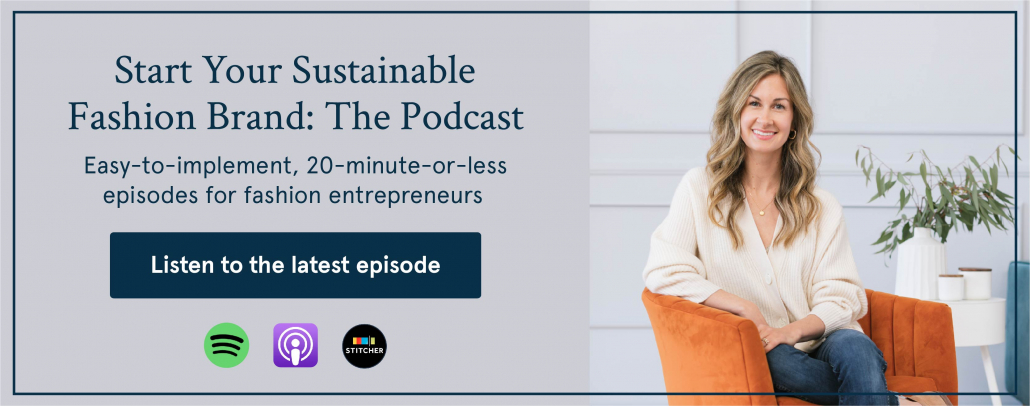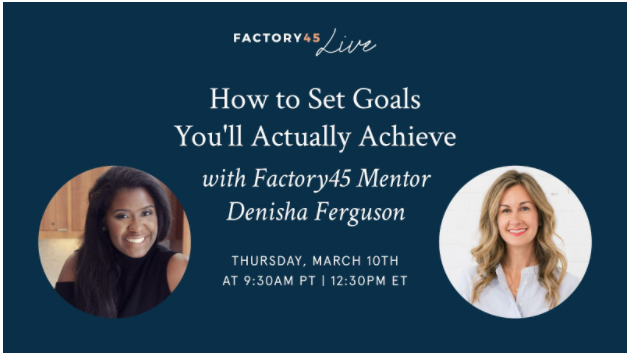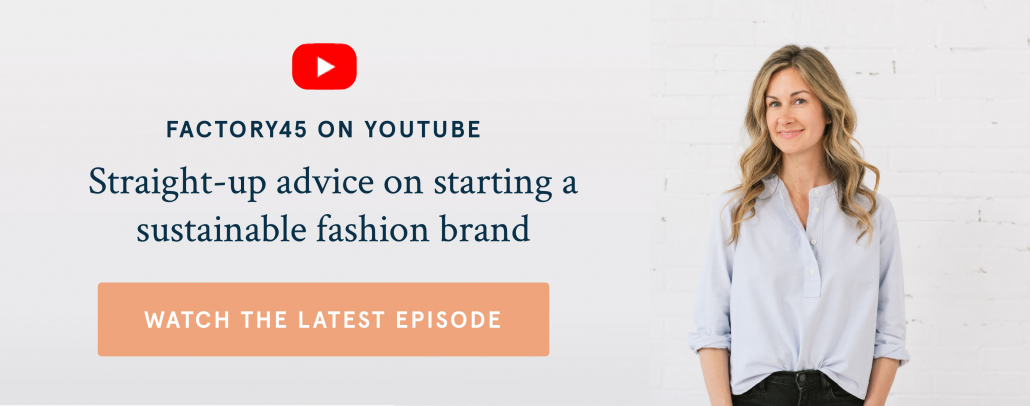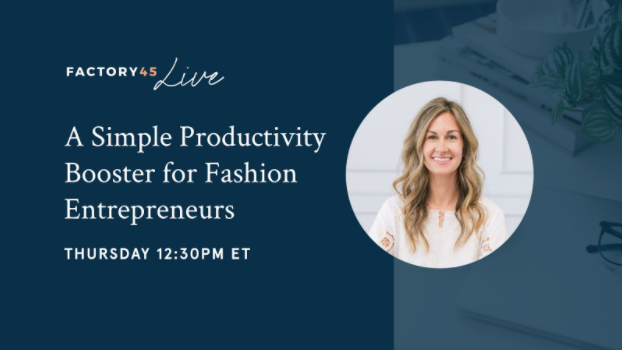Listen on Apple Podcasts | Listen on Spotify
We all have moments in life when we set a goal, and for whatever reason, it feels like an impossibility to achieve. At first we’re amped up, we feel motivated and then time goes on and we don’t make much progress. Wherever you are in the process of starting your fashion brand, there will be things that come up that stop you in your tracks. How do we get around those moments to build a business? In today’s episode, I’m talking about how to set goals as a fashion entrepreneur, and actually achieve them.
Resources mentioned in this episode:
Non-traditional Goal Setting Blog Post
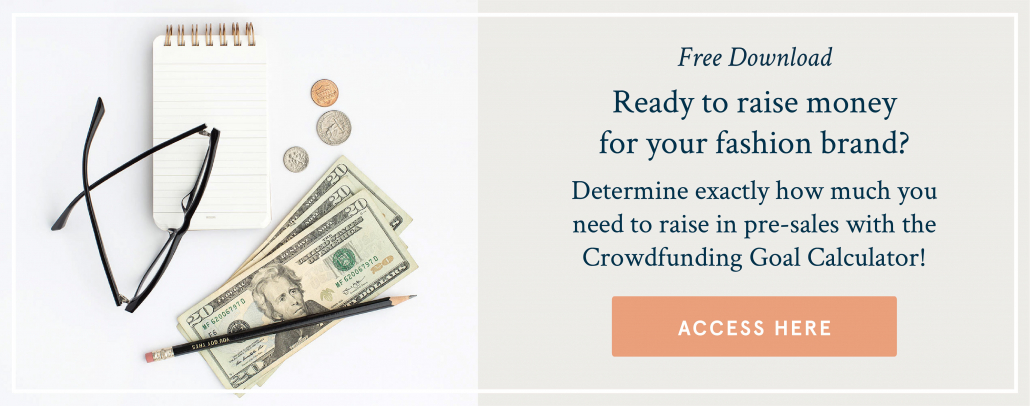
TRANSCRIPT
We all have moments in life when we set a goal, and for whatever reason, it feels like an impossibility to achieve. At first we’re amped up, we’re really excited about the goal. We feel motivated and then of course, time goes on and maybe we don’t make much progress.
We lose our fire and that goal starts to feel completely unattainable. It’s that feeling of being so excited and then quickly realizing that it’s going to be a lot harder than you thought it was.
When in reality, this goal is really no less attainable than it was when you said it in the first place. I want to get specific today with this, and where you might be in starting a fashion brand.
Maybe you’re in the idea stage and you’re still feeling that fire and motivation.. which is great! But maybe you’ve been at it for a while, you’ve sourced some fabric, you’ve talked to a few manufacturers… but you’re just feeling a bit stuck.
Maybe you’ve set up your entire supply chain and that was really easy for you. You attained that really easily and you’re ready to launch but you realize that you haven’t done any marketing yet – and that’s the big thing that’s holding you back right now.
So wherever you are in the process of starting your brand, there will be things that come up that stop you in your tracks. This begs the question… how do we get around those moments that do stop us in our tracks? The moments that derail us feel too hard, are too overwhelming and essentially drive us to inaction.
I’ve shared this story before, but I want to share it again today as sort of a reframe for those moments in starting your business when things feel too hard.
I was listening to a podcast episode with a neurologist who specializes in psychology and she was talking about neuroplasticity which is the brain’s ability to reorganize itself with new neural pathways. Your brain relies on so many existing connections that it’s hard to break free from them. This is why, for example, it’s so much harder to learn a new language after the age of 26. The neurologist explained that in some cases, the medical field is starting to see people in their 60s who have more neuroplasticity than people in their late 20s.
Why?
It’s that the people in their 60s are willing to do hard things.
It’s the wordsmith who practices sudoku puzzles. It’s a mathematician who writes a novel. It’s a Japanese person who learns Spanish. A person with dyslexia who practices crosswords.
She said that the level of challenge should leave you exhausted and completely spent.
As I was listening to her, I started thinking about the entrepreneurs I’m currently working with in Factory45, who are just right now in the thick of launching their clothing brands. Right now, most of them are tackling new skills and challenges that they’ve never encountered before. They work their day job and then have to create landing pages from scratch. They went through med school and now they’re having to write copy for emails or product pages. They write headlines, do marketing, deal with tech issues, design challenges, negotiating, creating, organizing.
I hear from so many of them about how much this process is pushing their comfort zone, but as entrepreneurs, we want to do hard things.
We should do hard things and there’s neurological science to back it up.
When you come to a point where you literally want to rip your hair out, can you think of the moment as an opportunity to wake up the brain, learn a new skill, and redirect those neural pathways, because in the long run you will be better for it.
We will all be better for the hard things we teach our brains to do. That’s the reframe. There’s the tactical strategy of it and that’s what I want to talk about more: How to set goals and actually achieve them.
For me, the first step is to stop calling them goals.
At the end of December, I do an annual review of how my year went business-wise. It’s not fancy. I have a journal and then I plan ahead for my business the following year. Until 2019 I would always just write ‘Goals’ at the top of my notebook and then just start listing out the things I wanted to do in the following year. A few years ago when I sat down to do this, instead of writing goals I wrote ‘Focus’. At that moment I realized it was never my past goals that were that important.
Yes, it’s great to achieve goals, but it wasn’t the goal that got me to achieve it. It was the tangible small steps that I focused on to achieve those goals. I want to walk you through this:
I started by dividing the year into two parts: Q1/Q2 & Q3/Q4.
For Q1/Q2, I wrote down one singular focus. Not a goal, a focus. The focus was marketing: that meant for me spreading the word about the Factory45 program because I open applications every May. Then for Q3/Q4, I wrote down one singular focus. The second focus was the Factory45 experience. This is making sure the entrepreneurs in Factory45 have the best possible experience.
For you, let’s say you want to come up with one primary focus for this fall that you can just really deliver on and achieve. Maybe for you that’s also marketing, so that you can build an audience before you launch.
The next thing we would do is come up with a list of buckets that relate back to the focus of marketing. These buckets are the tangible action steps that fall under marketing as the focus. So for example, one of my marketing buckets was my email list and my blog. Underneath that bucket, I listed all of the action steps that go into my email list and blog as they relate to marketing.
So, if you were to do the same, you’re probably going to have an email list or blog or both. For you, that could be creating one piece of content per week.
- It could be written, video, audio, whatever you want.
- Sharing that piece of content to your email list and social media following
- Cross-promoting other people in your niche.
- Hosting an instagram live once per month
- Creating a lead magnet for your landing page
- Driving new subscribers to your email list through that lead magnet and social media
There are so many other marketing things you could add to this bucket, but this is just an example. The point being that you are removing the emphasis on goal setting as this lofty unattainable thing. You’re replacing it with a focus and then breaking down that focus into small tangible steps.
The next thing I do is I get out my calendar and I create a timeline. Let’s say you’re focusing on marketing for September through November. You would write down September and then list out the action steps for that month.
- Create four pieces of content for each week of the month
- Email and share those pieces of content to my email list and social media following.
- Create one lead magnet for my landing page.
- Host one instagram live.
Notice that not all the action steps I listed a minute ago made it onto the list for September. Some of the things for September will actually roll into October and November because they’ll be ongoing, like emailing your list.
Here’s the deal, if we bite off more than we can chew by taking too much and saying we’re going to accomplish like 30 things by the end of the month, then you’re not only going to accomplish far less, but you’ll also be disappointed in yourself and that’s it doesn’t serve anyone.
Here’s a recap:
Number one, going into the fall give yourself one main focus. This doesn’t mean that you can’t do anything else business related, but you want 80% of your effort in starting, creating, building, launching your fashion brand to support this main focus for the fall.
Number two, list all of the supporting action steps for this focus and divide them into buckets. So your email list and blog was one of our example buckets.
Number three, under each bucket list the sub steps or the action steps required. So again, we had some examples, create a lead magnet, do an instagram live.
Number four, allocate each of these action steps to specific months knowing that some will be ongoing and roll over. So in the example we did, we had September and we allocated four action steps to the month of September.
Number five, add each of these tasks into your task management platform, to-do list, digital calendar, whatever you like to use. I use Asana or Trello, but a good old-fashioned day planner works too.
I often say to myself and others that if we knew what we were getting ourselves into, whether that’s starting a business or a fashion brand, then we probably start before we start
And so many people do. They have an idea and then it just passes through and they never take any action on it. That’s fine, but if you want to actually accomplish what you’ve set out to do, then the best gift you can give yourself is to break it into baby steps. Just write that down. Baby steps.
The other thing is to expect it to be difficult and to persist anyway. Give yourself plenty of time – more than you think it’s going to take.
I hope that was helpful! I’ll post a link to the blog post that outlines this system of non-traditional goal setting so you can see the steps about the focus and the buckets in writing. In case you didn’t get all those notes down, I know I probably talk too fast, but you can use them for yourself if you want to!
Are you working behind the scenes to start a sustainable fashion brand? Maybe you’re working a full-time job and pursuing your brand as a “side hustle” — that’s our favorite type of entrepreneur to work with. If you’re interested in learning more about not only starting, but actually launching, your fashion brand with Factory45, book a call to learn more about working with us. The link is in the description of this episode or you can go right now to http://factory45.co/apply We’d love to chat and hear more about your business goals.
